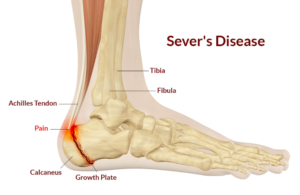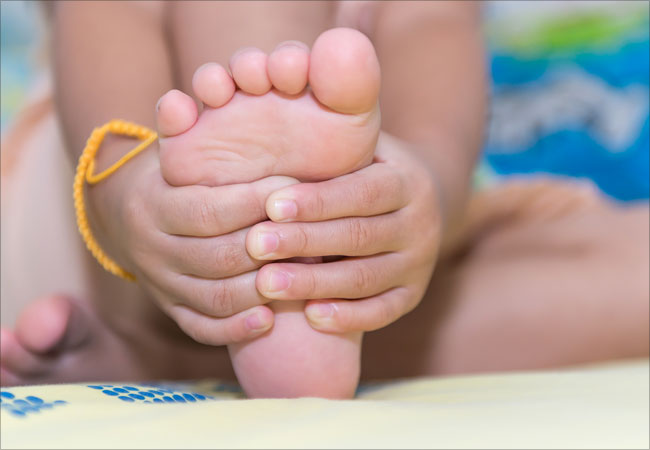Severs Disease
Why do my child’s feet hurt? Severs Disease could be the answer.
With training for winter sports well underway, we have had an increase in the number of children presenting with heel pain.
Many of our young patients can hardly walk after training, games or waking in the morning. It’s heart breaking to see the pain these young athletes are going though, but what’s going on? Severs Disease could be the answer.
Severs Disease is an inflammation of the growth plate in the heel bone (calcaneal apophysitis) and most commonly found in actively growing children aged 8-16 years. It is caused by repetitive stress or impact on the particular area. This is usually more prevalent after an increase in sports training or physical activity such as walking, running and jumping. Research has also shown a link between severs disease and over-pronation in the feet, and so can commonly occur in both heels at the same time.

What Causes Severs Disease?
But why? The heel bone is a minefield of attachments for many tendons and ligaments from the shin (tibia and fibula) and foot, as well as the Achilles tendon which is also the thickest in the human body. Any action involving the foot and leg will require the use of these tendons and ligaments. Usually, the body is fantastic at adapting to the needs of a new environment or activity and can withstand amazing loads and forces transmitted along the biomechanical chain. However, when these bones and tendons are still developing, a sudden increase in activity can cause excessive traction in a short space of time. As a result, the body will respond with temporary pain and inflammation to limit any potential future damage.
How do we treat Severs Disease?
So, what’s the plan to deal with Severs Disease? We need to reduce the inflammation and pain in the heel. Initially, treatment to the lower leg and foot will provide symptom reduction.
At Williamstown Health + Lifestyle we are one of only a few practices in Melbourne that use Radial Shockwave therapy. (RSWT) RSWT has been proven to be effective in treating pain from Severs Disease in 90% of children in two weeks. Low power sound waves help stimulate healing in the growth plate. RSWT is applied 2 – 3 times over a two-week period, during which time rest from intense activity is advised. Activity can then be increased slowly after this period, to ensure proper healing of the growth plates.
Massaging under the foot with a frozen bottle of water for 10 -15 minutes also greatly decreases pain and inflammation associated with Sever’. Foam rolling and stretching the calf can also be easily done at home
Next comes an assessment of the knee, hip and functional movement. This holistic approach ensures all other possible causes are addressed to avoid the symptoms returning. The body works as a mechanical chain, meaning an individualised movement and exercise-based approach will avoid any unnecessary weakness developing, as well as targeting the localised structures.
At Williamstown Health + Lifestyle, we pride ourselves on combining acute treatment and movement-based therapy for long term, pain-free management. Come and chat to someone who will answer the questions you have, and get you back to doing the things you love.



